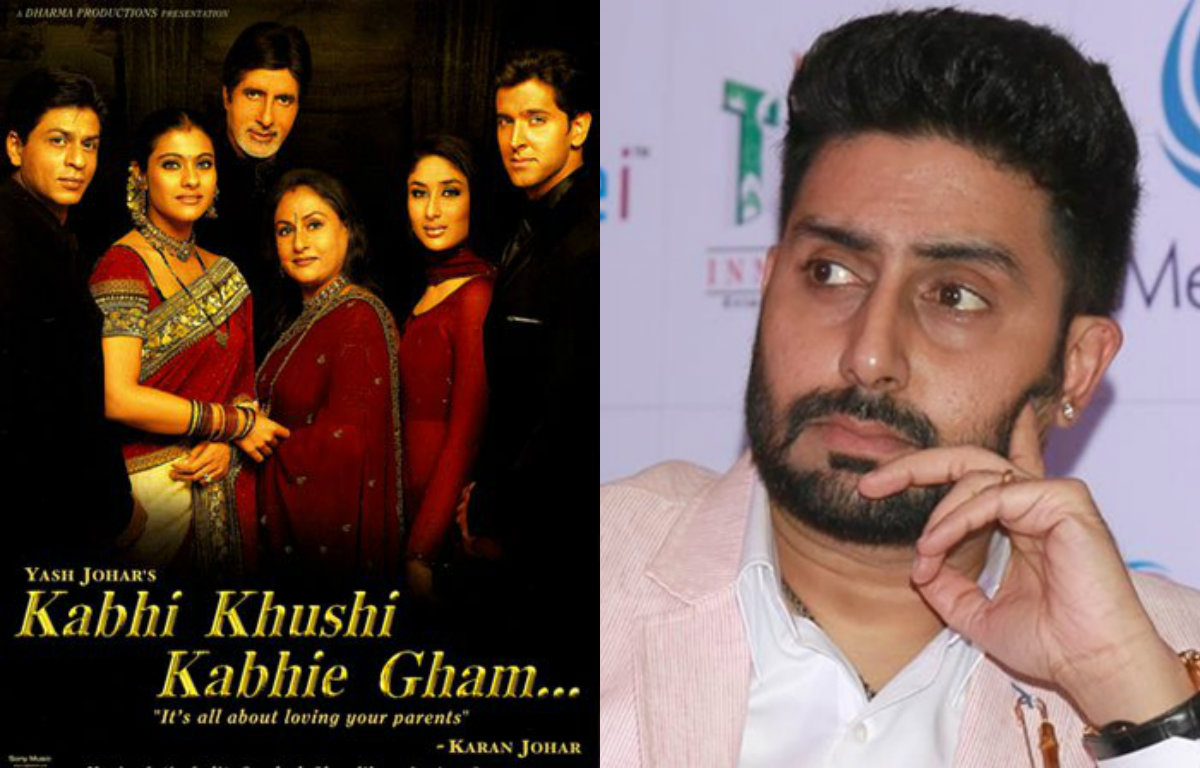Movie Kabhi Khushi Kabhie Gham
Rahul and Anjali become friends - Kabhi Khushi Kabhie Gham - Shahrukh Khan, Kajol - Moments of Love. Dec 14, 2001 - Anjum N. 'Kuch Kuch Hota Hai was raw. Kabhi Khushi Kabhie Gham is rich,' said writer-director Karan Johar about K3G, his second film. Apr 04, 2014 The title song of the film 'Kabhi Khushi Kabhie Gham', composed by Jatin Lalit has the nightingale of Hindi film songs Lata Mangeshkar showing her.
Sing Along to 'Yeh Ladki Hai Allah', the ultimate wedding song, from 'Kabhi Khushi Kabhie Gham'- featuring the voice of Alka Yadnik and Udit Narayan. The movie stars 6 superstars - Amitabh Bachchan, Jaya Bachchan, Shah Rukh Khan, Kajol, Hrithik Roshan and Kareena Kapoor. This is Bollywood in all its grandeur and flamboyance in this one chartbuster song Song Name - Yeh Ladki Hai Allah Movie - Kabhi Khushi Kabhie Gham Singer - Udit Narayan; Alka Yagnik Composer - Jatin Lalit Lyricists - Sameer Anjaan Director - Karan Johar Producer - Yash Johar Studio - Dharma Productions Pvt.
Music Label - Sony Music Entertainment India Pvt. (C) 2001 Sony Music Entertainment India Pvt. Subscribe: Vevo - Like us: Facebook: Follow us: Twitter: G+.
Kabhi Khushi Kabhie Gham or K3G is a film, directed by Karan Johar and starring Amitabh Bachchan, Shahrukh Khan, Kajol, Kareena Kapoor, and Hrithik Roshan, about the struggles of a westernizing, diasporic family. The film details the differences in dealing with tradition and becoming a part of the westernizing world. This can best be examined through the characters of Anjali and Pooja, as they try to reconcile their life in India and their life in England. The film begins with Rahul Raichand (Khan) the son of wealthy businessman Yash Raichand. (Bachchan) Rahul, who was adopted by Yash and his wife Nandini (Jaya Bachchan), is the favorite son and is made to promise that he will uphold the family tradition and obey his father’s rules. This all comes undone when Rahul meets Anjali (Kajol), a lower class Punjabi girl who is vibrant and full of fun and life, with whom he falls in love. After his father arranges a marriage for him and his family friend to be wed, but he turns it down and decides to marry Anjali after the death of her father.
This destroys Rahul’s father and he disowns him. Rahul, Anjali, her mother, and her sister Pooja (Kapoor) all move to England where they make a life for themselves. In the meantime, Rahul’s brother, Rohan (Roshan) discovers all of this about his brother upon his return from boarding school. He moves to England under an alias and vows to reunite his family.

He does succeed, and at the end of the film the family is reunited and happy once again. However, one can best understand the difficulties of identity that the film portrays through the sisters Anjali and Pooja. Anjali and Pooja grow up as lower class girls in the neighborhood of Chandni Chowk, Anjali is fun-loving, spunky, and adores her family. Pooja is a young and scrappy girl who runs with a group that bullies young Rohan.

Kabhi Khushi Kabhie Gham Songs

The two sisters are transported into a wealthy, westernized existence when Rahul moves them to England. However, one can see that there is a difference in the way in which the two sisters deal with their emigration. Anjali becomes the quintessential Indian mother/wife. She wears saris, she is modest and she is nurturing. She also speaks primarily Punjabi/Hindi and does not have relationships with the English people around her.
She longs for India and wishes to go back there, to take her son there so that he is able to grow up how she did, and to live out the rest of her life around a people and culture that is similar to hers. Her diasporic experience is then not a positive one. Even though she lives in this immense, modern English home, she is missing the full experience of family. She is also meant to serve as a metaphor for tradition and India itself.
Anjali is the representation and reminder of home for the family abroad. She is also a source of strength for the family and for Rahul, seen as she supports him throughout his battles with his father. This clashes with Pooja, who has used her emigration to become everything that Anjali is not, westernized, sexualized, and dissociated from her homeland as she tries to become a popular girl.
We see her in various scenes dancing in “revealing” clothing, speaking English, and making it a quest to make Rohan love her. At the beginning of this portion of the film we see her as rejecting everything Indian, perhaps in an effort to adjust to this new culture after being transported there at young age, or maybe in an effort to forget the traumatizing events that surrounded her sudden departure. Whatever the case may be, Pooja is a metaphor for the new and western. The sisters represent the old and the new and through them we can understand diasporic identity better. As Pooja becomes closer to Rohan and begins to take on more traditional practices, we see diasporic identity as an amalgamation of the old and the new.
We can understand that there are many different coping methods when one leaves their culture, but ultimately, we see that the mother country’s memory is not forgotten. In K3G, we can see that tradition has it place and its necessity in one’s life. Rules may be broken, but the love and support of generational family, which is central to this family and in Indian culture in general, is necessary for fulfillment and happiness. Post navigation.